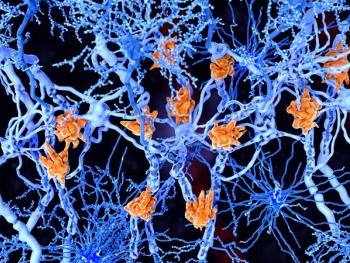
Academia
Latest News

Latest Videos

CME Content
More News

The study found that just 20% of trials submitted to both the FDA and European Medicines Agency had matching evidence.

Investigators found that lipid metabolism disruptions spark T-cell dysfunction in patients with chronic lymphocytic leukemia.


Health care institutions with large numbers of Medicare and Medicaid patients may be constrained from offering cancer therapies made available under the accelerated approval pathway.

Regina Barragan-Carrillo, MD, a postdoctoral fellow at City of Hope Comprehensive Cancer Center, discussed findings that show 76% of renal cell carcinoma trials take place in wealthy countries, amid news that clinical trial access for the world's poor may become even more challenging.

Less than half of patients had undergone bone monitoring, suggesting a need for better clinical guidance and management of osteoporosis in adult men with Duchenne muscular dystrophy (DMD).

Patients with myelodysplastic syndromes (MDS) who undergo allogeneic hematopoietic stem cell transplantation (allo-HSCT) are older and face worse outcomes compared with non-MDS patients, according to posters presented at the 2024 American Society of Hematology meeting.

The study demonstrated a poor prognosis overall for patients with acute myeloid leukemia (AML) who were previously treated with hypomethylating agents (HMAs) for myeloid neoplasms such as myelodysplastic syndromes.

Common measurements for modified adeno-associated viruses (AAVs), a gene therapy delivery method, showed substantial variation in accuracy and precision.

If the subcutaneous delivery method gains approval, an advantage daratumumab holds over isatuximab would be removed.



An August 2024 update to the National Comprehensive Cancer Network (NCCN) clinical practice guidelines for treatment of myeloproliferative neoplasms (MPN) calls puts a priority on clinical trials, even preferring them to FDA-approved therapies in some cases. Aaron Gerds, MD, MS, of Cleveland Clinic Taussig Cancer Institute discusses the updates and what's in the pipeline for MPN treatment.

HDP-101, a novel antibody-drug conjugate, targets BCMA with a synthetic amanitin payload that causes tumor cell death.

Nicolas Girard, MD, head of the Curie-Montsouris Thorax Institute, discusses patient-reported outcomes (PROs) from the phase 2 LUMINOSITY trial of telisotuzumab vedotin (Teliso-V) in non–small cell lung cancer (NSCLC).

Accountable care organizations (ACOs) with a major teaching hospital were associated with lower mortality, lower inpatient spending, lower emergency department utilization, and higher overall outpatient spending.

Mirvetuximab soravtansine showed high evidence of efficacy in heavily pretreated FRα-positive, platinum-sensitive ovarian cancer, which is a challenging patient population to treat, Angeles Alvarez Secord, MD, MHSc, gynecologic oncologist at Duke Health, said.

Jonathan Riess, MD, MS, director of thoracic medicine at UC Davis Health, gave insight into the rationale and efficacy data for combining cancer vaccine IO102-IO103 with pembrolizumab in advanced squamous cell carcinoma of the head and neck.

The rate of uninsurance in 2023 was 8.0%, a statistically insignificant change from the 7.9% uninsured rate in 2022.

Speakers at the 2024 World Conference on Lung Cancer discussed the considerations that must go into designing and performing clinical trials in the early-stage lung cancer space, ranging from selecting an end point to empowering participants.

Investigators noted that a formal independent validation cohort needs to be developed to realize the full potential of the human model.

Measurements on a standard phantom and a clinical data set of patients with Duchenne muscular dystrophy (DMD) were used to validate a novel robust reference frequency method approach, which outperformed typical imaging strategies.

The HERCULES study of tolebrutinib is the first and only to show reduced confirmed disability progression at 6 months in nonrelapsing secondary progressive multiple sclerosis (MS).

A predictive tool considering disease duration, age at disease onset, age, and Expanded Disability Status Scale score estimated patients’ risk of transition to secondary progressive multiple sclerosis (MS).

A codesigned online nutrition program could potentially fill a need for reliable and evidence-based nutrition information for patients with multiple sclerosis (MS).





















































